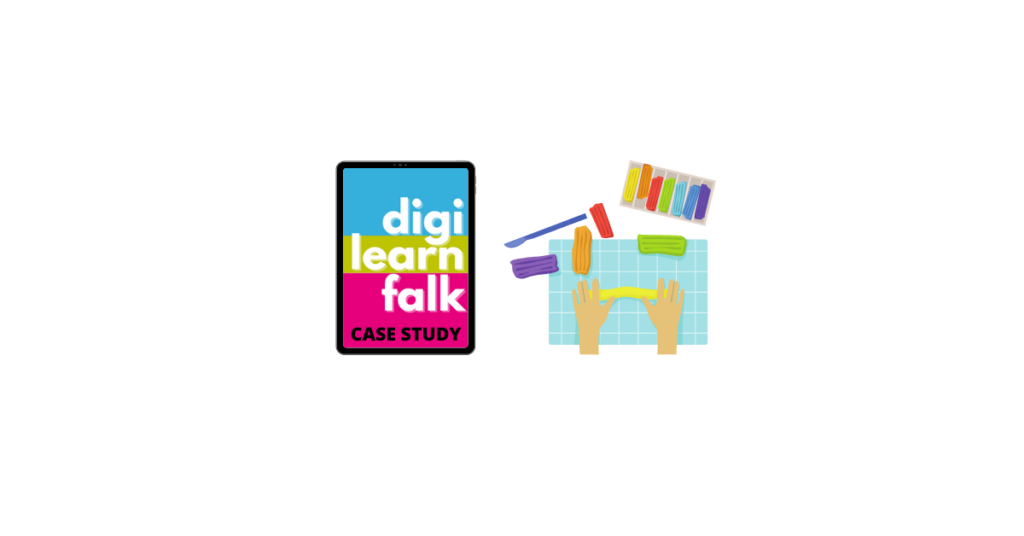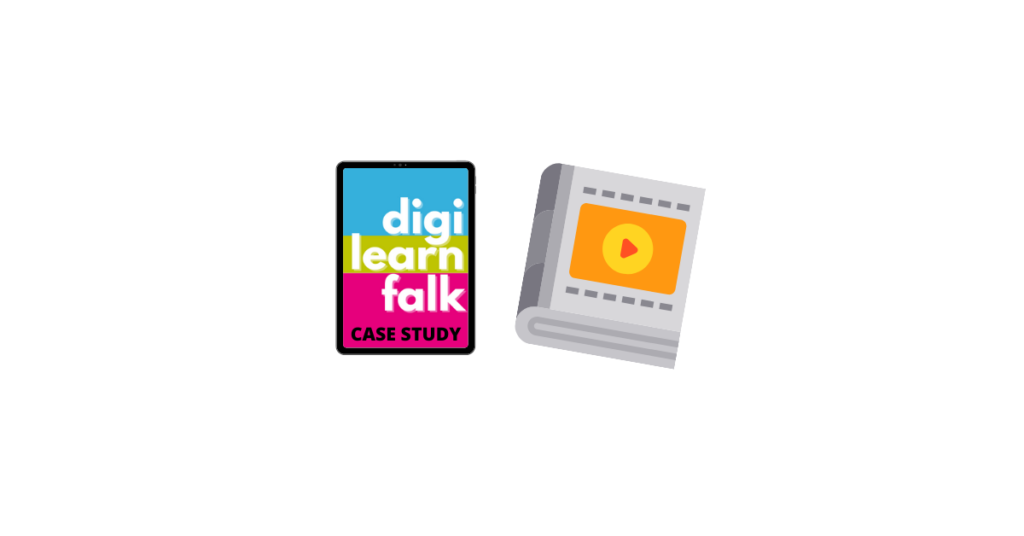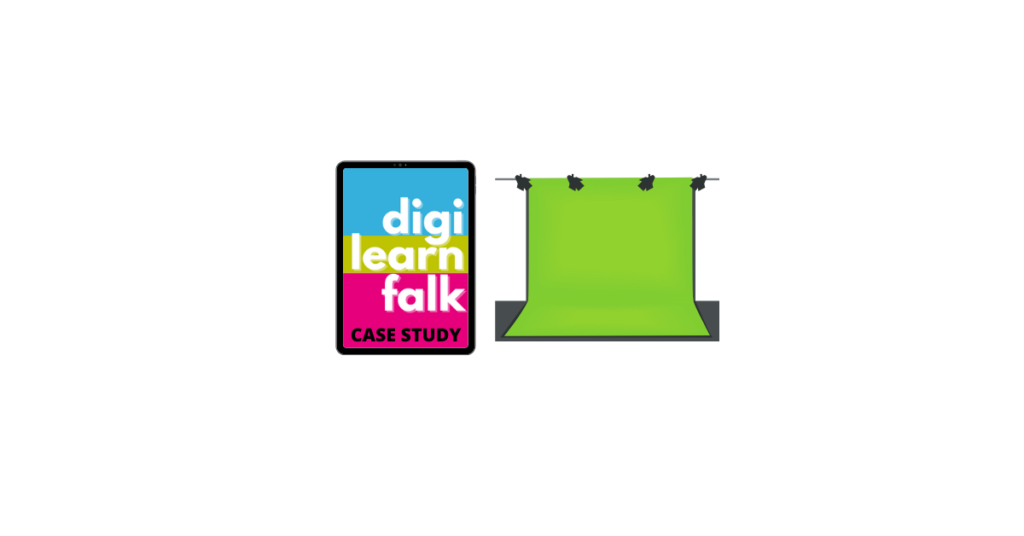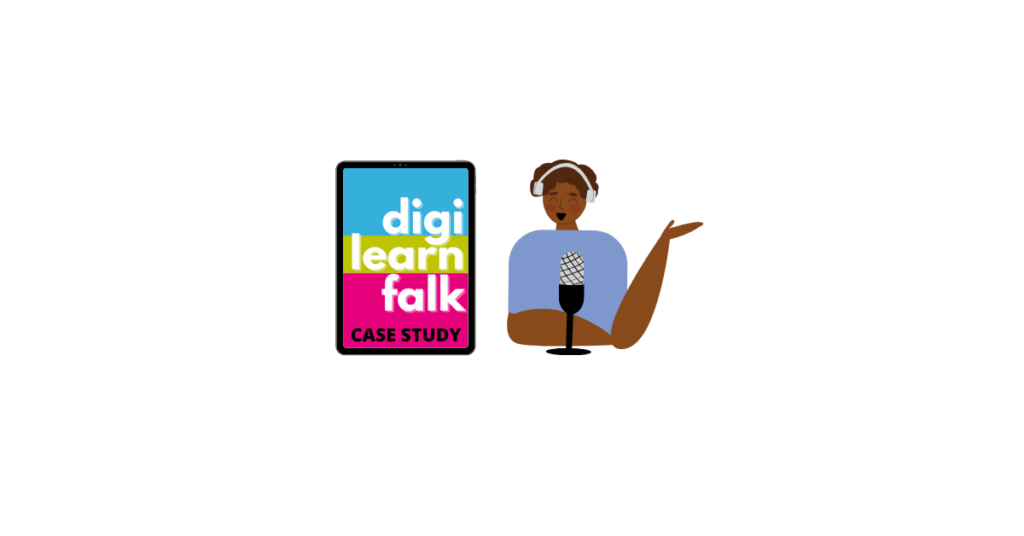This case study explores how Larbert Village Primary School explored claymation with Primary 1 learners and their families in a series of special events. Class teacher Lauren Campbell takes us through the project. Read more



“I like looking back through all our learning and we can still look at it this year too.”
“I loved seeing other people’s work on the board.”
“I enjoyed making up my own animals and making them talk on Chatterpix.”
“Due to the success of the initial test of change, this has now become an integral part of our School Improvement Plan. All classes are now using digital floor books to evidence IDL, and our Primary 1 teachers are also using them to document literacy, numeracy and discovery learning. Our P6 and P7 pupils are using digital floor books to record their personal learning journeys too. The floor books are also a collaborative tool across stages and useful to pass on to future teachers so that it is clear what the pupils have covered, allowing for coherence in learning. We are looking at ways that we may be able to share these with parents and carers in the future, which may mean that we explore different platforms for creating the floor books.”

“I have noticed a huge improvement in engagement and behaviour. I very quickly saw an improvement in the quality of answers and in student confidence when attempting questions. This has continued into the 2023-24 academic year. BGE classes are on a rota and it can be tricky to settle some classes. I have found that a couple of weeks of getting used to using Curipod and the majority of students settle quicker at the start of class and maintain a better level of focus throughout the lesson. The range of generators and the adaptability of them makes them useful to any faculty in the school. English are already experimenting with the generated feedback and seeing positive results.”
“It makes learning more fun and useful like if the AI was to give us feedback it would give us it back in 30 seconds but if a teacher was to give feedback it would be 2 to 3 weeks (no offence teachers)!”
“It helps the lessons move a lot faster so we’re able to get more done in shorter periods of time.”
“It’s good having that drawing brain break because it refreshes your mind for upcoming questions.”
You can find out more about what students think by exploring Aileen’s ‘What do student’s think about Curipod?’ Canva or watching her presentation from Curicon which can be found below.
“I have started to try to introduce Curipod to colleagues. As I said, almost all of my lessons are now done with Curipod and if I am updating old ones I do it by ‘curifying’ them on the platform and adding in the new information. Decks can be shared with students via a link or you can now download them as PDFs which I have found useful for providing revision materials. The limit is really your own imagination.”

Primary 1
The main learning goals of this lesson was to create a classroom door display for a whole school competition. Traditionally this would have been an Expressive Arts lesson and children would have drawn an elf face and coloured it in with crayons/pencils. We were prompted following a training course with Connected Falkirk on using Keynote. We were inspired by a display we saw online that used children’s pictures instead of a self-portrait/drawing. We were keen to develop the learner’s iPad skills.
Primary 6
Our classes were set a challenge each day by Elfis our school Elf. We had to decorate our classroom door and as a Connected Falkirk 1:1 class we are always eager to use our ipads. We decided to level up our baubles/decorations by researching christmas facts from around the world and then recording these and turning into a QR code for others to scan.
Primary 1
We started with a teacher demonstration of how to use the camera on an iPad and children took pictures of each other. We then airdropped these to the teacher iPad. We opened Keynote and inserted pictures. I then used the tools within Keynote to crop the pictures and printed these. These were then added to the children’s elf bodies that they had cut out to create the final pieces for the door.
Primary 6
We designed our baubles and researched Christmas facts on projectbritain.com before we rewrote them using our own words. We then voice recorded our facts onto our Seesaw journals and printed out the QR codes which linked to our facts and stuck them on our baubles so that others can scan the QR codes on our door and hear all of our facts.
.
Primary 1
The children developed their digital skills and knowledge. They saw how digital can be used in the everyday classroom. We saw the real value in this and pupil engagement increased. Following this, I will be planning a series of digital skills lessons in the new term. I am always looking for ways to use digital to enhance the learning experience.
Primary 6
The children are proud of their work and it up levelled the task from a simple draw a bauble to a more level 2 type activity which used a much wider combination of digital and material skills. We also won the competition alongside P1 and got a candy cane and an extra playtime from Elfis!
“I found my Christmas fact fascinating. I didnt know anything about Sweden at Christmas before I did this job.” – P6 Pupil
”I hope people learn new facts when they scan my bauble. It was fun to use my ipad to complete this task I recommend trying this task.” – P6 Pupil
“I learned lots about art” – P1 Pupil
“I liked using the iPads. Can we use the iPads more?” – P1 Pupil
As a result of these tasks both Primary 1 and Primary 6 are keen to work more with their iPads. P6 are going to be looking into more exciting and varied ways to make use of QR codes to showcase their learning. P1 and their teachers are going to be looking into more ways to use iPads within their play pedagogy environment.




Glow Blogs uses cookies to enhance your experience on our service. By using this service or closing this message you consent to our use of those cookies. Please read our Cookie Policy.